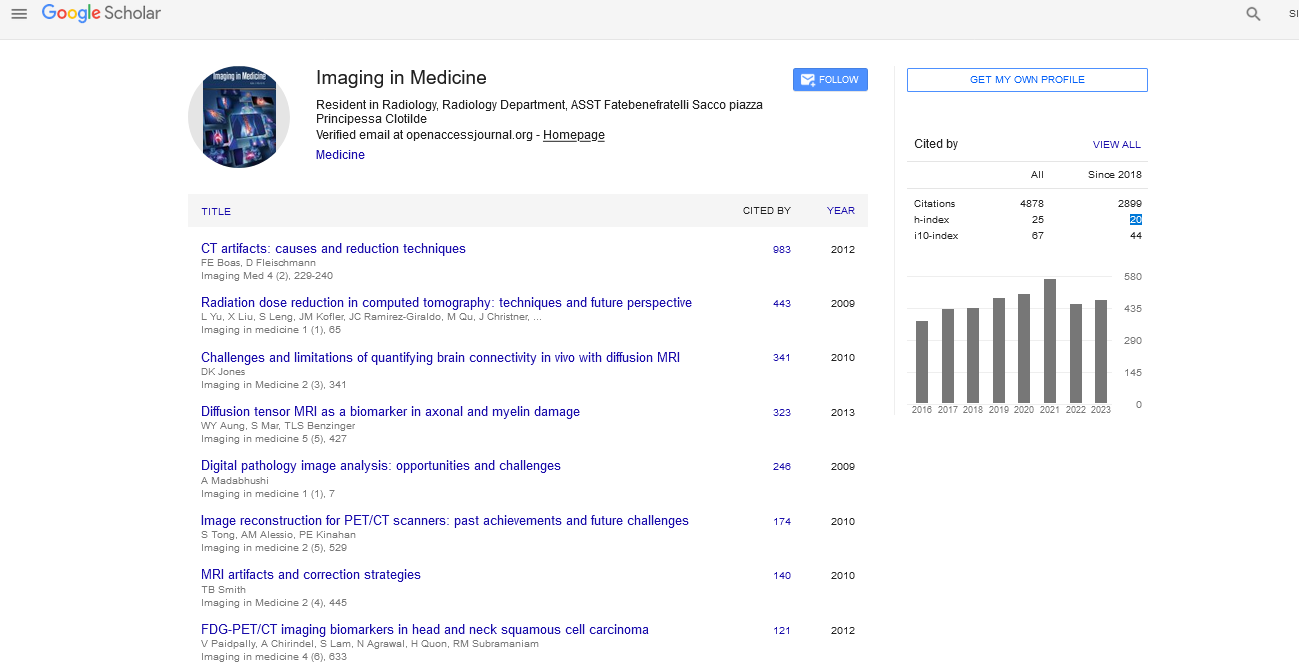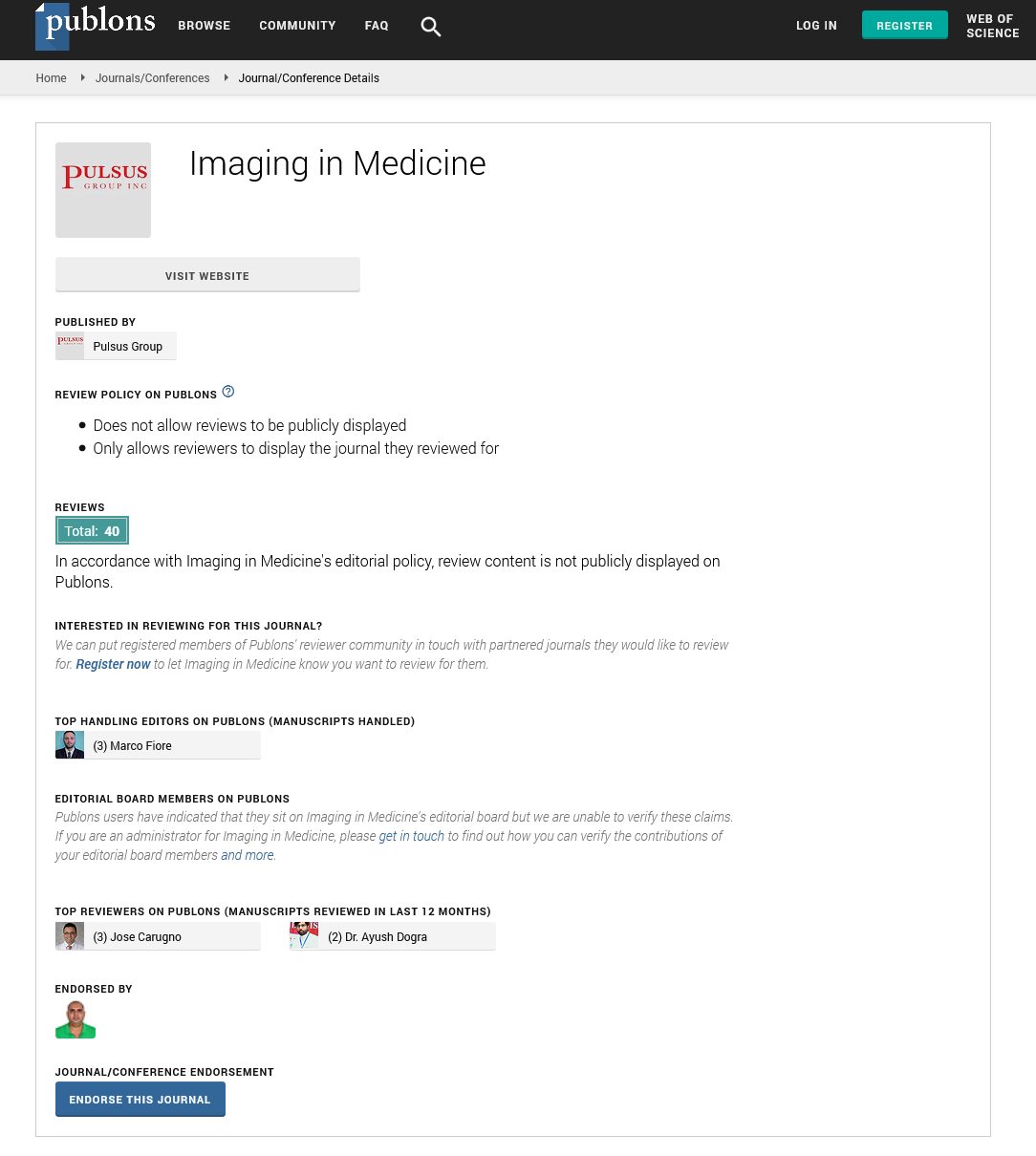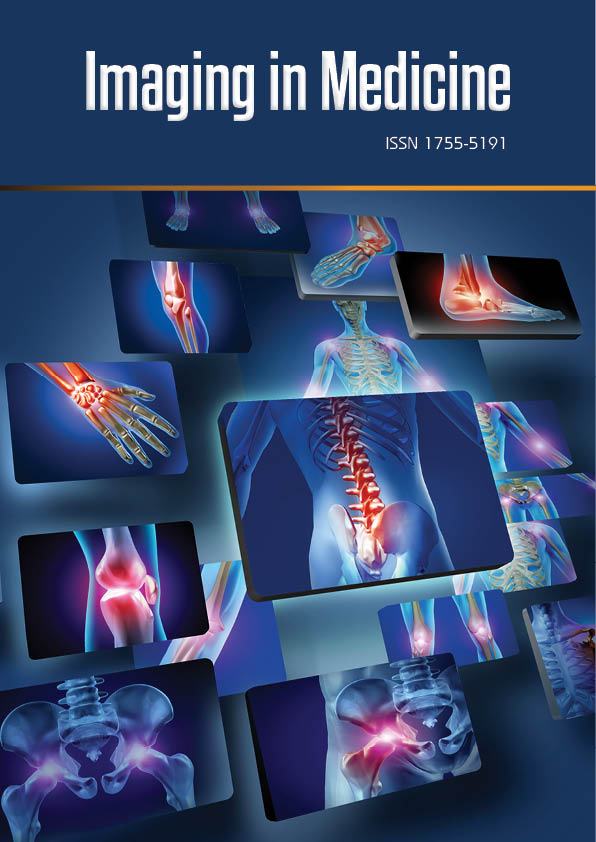Editorial - Imaging in Medicine (2013) Volume 5, Issue 1
Future prospects for hybrid magnetoencephalography MRI
Risto Ilmoniemi*Department of Biomedical Engineering & Computational Science, Aalto University School of Science, PO Box 12200, FI-00076 AALTO, Finland
- Corresponding Author:
- Risto Ilmoniemi
Department of Biomedical Engineering & Computational Science
Aalto University School of Science
PO Box 12200, FI-00076 AALTO, Finland
Tel: +358 350 5562964
Fax: +358 359 47023182
E-mail: risto.ilmoniemi@aalto.fi
Abstract
Keywords
magnetoencephalography ▪ MRI ▪ multimodal imaging ▪ neuroimaging ▪ SQUID MRI ▪ ultra-low-field MRI
Magnetoencephalography (MEG) allows one to measure magnetic fields produced by neuronal currents in the brain. Since these fields are typically located in the femtotesla range, superconducting quantum interference devices (SQUID) must be used to record the field. In the analysis and interpretation of MEG data, the structure of the head and the brain is needed; it is usually determined using MRI, where the applied fields may be 15 orders of magnitude higher than the smallest detectable neuromagnetic signals. Despite the great difference in relevant field strengths and the consequent challenges, it was recently demonstrated that MRI and MEG are possible with one and the same instrument [1,2]. However, it remains to be seen whether practical, clinically viable MEG–MRI instruments will be realized. In any case, the potential benefits seem to make the effort worthwhile.
Hybrid MEG–MRI is one of the newcomers in multimodal imaging, where the challenge is not only to integrate the measurement systems but also to combine the data intelligently and to devise optimal measurement paradigms. In this effort, comparison with biological sensory systems may be useful.
Multimodal imaging: analogy to human sensory systems
Much effort has recently been devoted to the development of multimodal imaging in order to combine, for example, PET with CT, EEG with functional MRI (fMRI), transcranial magnetic stimulation with near-infrared spectroscopy, or, as will be discussed here, MEG with MRI. When such combinations are properly achieved, the whole is truly larger than the sum of its parts.
Multimodal imaging began to be popular in the 1990s when the first efforts to combine separately performed fMRI and MEG data were published and when transcranial magnetic stimulation and EEG were combined [3–6]. Originally, multimodal imaging included sequential studies with different equipment, but an increasing amount of effort is now inserted into building instruments capable of two or more concurrent imaging modalities. For example, hybrid PET–CT and PET–MRI systems are already in clinical use.
Multimodal imaging can be likened with our ability to observe the environment with multiple senses. Basic MRI is like black-andwhite vision; with multiple weightings, such as those displaying T1, T2 or proton density, MRI becomes analogous to color vision. For humans, color vision widened our ability to distinguish between object categories such as raw and ripe berries. Unlike the tomographic MRI or CT, MEG and EEG are similar to hearing in that they do not provide images; they are specialized in telling us what is happening in real time in the scale of milliseconds. Although MEG used alone is not a tomographic technique, the multisensor spatiotemporal information it provides can be combined with MRI structural data so that 3D images of brain electrical activity are displayed tomographically. Combined senses of vision and hearing give us a rich representation of reality: vision often provides sufficient hints about the location of the source of a sound and hearing gives us temporal details. Other senses, such as touch or smell, provide further information of the object, for example, about its temperature or chemical composition. The motor system helps us to actively probe the object, for example, by shaking a box while listening and feeling whether it is empty or not. Technical analogies for these additional senses and motor acts are not difficult to find.
We have much to learn from how humans or animals sense the environment. In addition to biologically inspired multimodal imaging and brain stimulation technology, we can also learn important lessons from how the human observer decides to make new observations according to what seems to be the best way to gain further information, or how a priori information could help in interpreting the data. We may need this new understanding for the theory of measurement in order to take full advantage of the new possibilities. The development of multimodal imaging is progressing vigorously on many fronts; not only are imaging modalities combined, but genetic and other patient information are also integrated into the analysis of medical imaging data.
MEG–MRI
In MEG, the weak, femtotesla-level (1 fT = 10–15 T) magnetic fields produced by neuronal electric currents in the brain are measured using large arrays (up to 306) of SQUID sensors that cover the whole head. MEG measures neuronal activity directly: when a neuron is firing, it gives a characteristic signature to the electromagnetic field by producing postsynaptic currents at the synapses connecting it to receiving cells. When a sufficient number of neurons fire at the same time, the magnetic field can be measured outside the head with the SQUID magnetometers. Similarly, the electric field can be measured with electrodes attached to the scalp. The advantage of MEG over EEG is its more straightforward interpretation, as details of skull or scalp conductivity do not affect MEG much; however, they affect the electric field a great deal in ways that are difficult to take into account. From the field pattern measured during sensory stimulation or task performance, sites of active cortex can be calculated. For reliable localization of the active sites, the structure of the subject’s head and its position with respect to the magnetometers must be accurately known. Although MRI gives the fine structure of the head in great detail, the determination of the location and orientation of the brain with respect to the MEG sensor array is problematic, leading to errors that can exceed 5 mm.
“Multimodal imaging can be likened with our ability to observe the environment with multiple senses.”
MRI, in contrast to MEG or EEG, is essentially a structural imaging modality: it measures the distribution of tissue properties, such as proton density or spin relaxation times.
It can provide images of concentrations of paramagnetic materials such as oxygenated blood or of the anisotropy of water diffusion. Since these tissue properties can change as a result of local neuronal activity, their measurement can be used in functional imaging as well. However, the interpretation of, for example, the blood oxygen level-dependent effect, is problematic as some neuronal activation patterns can increase the signal while other patterns may do the opposite; we are not sure what determines the outcome. Therefore, the interpretation of fMRI is problematic. Typically, the strength of the blood oxygen level-dependent effect is ignored altogether; only the statistical significance of the change is determined and the distributions of significance are displayed as color maps superimposed on anatomical brain images. In addition, the hemodynamic response always comes with a delay after neuronal activation. Despite its limitations, fMRI is a highly popular and useful method in neuroscience; it demonstrates where changes in brain activity happen in different experimental conditions.
“We may need this new understanding for the theory of measurement in order to take full advantage of the new possibilities.”
MEG–MRI may eventually be the method of choice in some clinical and scientific applications where fMRI will fail. MEG is a quantitative method, while fMRI is typically not. The probability maps can lead the clinician astray, since even a small activity can be statistically significant and a strong activity may go unnoticed if its statistical significance is small owing to its variability.
Demonstrated originally at Berkeley University [7] and Los Alamos National Laboratory [8], ultra-low-field MRI (ULF MRI) appears to be capable of producing clinically useful data. When combined with MEG, the advantage is that MRI can be obtained in the same session with MEG, saving time and effort and improving the accuracy and reliability of source localization. A promising application of ULF MRI is also the characterization of cancerous tissue [9]. Further advantages are its inherent safety, quiet operation, light weight and the possibility to scan cardiac pacemaker patients and patients who are too obese to fit into a regular magnet. ULF MRI does not suffer from distortions from susceptibility variations, which is a problem at high fields. Therefore, ULF MRI would be ideal for MEG, which will benefit from very precise undistorted shape and location information that is used in solving the inverse problem.
Challenges
The fundamental challenge of MEG–MRI is the discrepancy between the magnetic fields involved in each modality. In ULF MRI, the tissue is first prepolarized at 10–200 mT. After turning off the prepolarization field, the Larmor precession and measurement with SQUID sensors take place at approximately 100 μT; the signals are 12–14 orders of magnitude lower than the prepolarization field. Since the measurement field is relatively weak, the gradients are small as well, resulting in a narrow bandwidth and limited data rate. The signal-to-noise ratio is also a big challenge with present methods. Additional problems arise from the magnetization of materials and eddy currents due to the switching-on and -off of the prepolarization coil.
In our first helmet-shaped array prototype, the prepolarization field was 22 mT and the sensor noise level approximately 5 fT. When we aim at a clinically useful system, the prepolarization field must be increased by a factor of 5–10 and the noise level lowered by a similar factor. This will increase the signal-to-noise ratio by a factor of 25–100, which will allow us to reduce the measurement time and improve discrimination between tissue types. The low data rate is alleviated by also increasing the number of SQUID sensors to several hundred; methods of parallel imaging, as well as the use of a priori information must also be further developed. We expect an overall increase in useful data rate by a factor of 1000–10,000 during this decade.
The integration of MEG and MRI in a single hybrid system has only recently been demonstrated. Such systems are feasible and have the potential for improved accuracy and reliability in locating electrical activity in the brain and for providing new kinds of information owing to the unique relaxation time characteristics at low fields. ULF MRI is safe, silent, and inexpensive. However, the benefits will be available only after several difficult challenges have been properly solved and clinical market acceptance has been obtained.
Financial & competing interests disclosure
The author has no relevant affiliations or financial involvement with any organization or entity with a financial interest in or financial conflict with the subject matter or materials discussed in the manuscript. This includes employment, consultancies, honoraria, stock ownership or options, expert testimony, grants or patents received or pending, or royalties.
No writing assistance was utilized in the production of this manuscript.
References
- Zotev VS, Matlashov AN, Volegov PL et al. Microtesla MRI of the human brain combined with MEG. J. Magn. Reson. 194, 115–120 (2008).
- Vesanen PT, Nieminen JO, Zevenhoven KCJ et al. Hybrid ultra-low-field MRI and magnetoencephalography system based on a commercial whole-head neuromagnetometer. Magn. Reson. Med. doi:10.1002/mrm.24413 (2012) (Epub ahead of print).
- Ahlfors SP, Simpson GV, Dale AM et al. Spatiotemporal activity of a cortical network for processing visual motion revealed by MEG and fMRI. J. Neurophysiol. 82, 2545–2555 (1999).
- Korvenoja A, Huttunen J, Salli E et al. Activation of multiple cortical areas in response to somatosensory stimulation: combined magnetoencephalographic and functional magnetic resonance imaging. Hum. Brain Mapp. 8, 13–27 (1999).
- Dale AM, Liu AK, Fischl BR et al. Dynamic statistical parametric mapping: combining fMRI and MEG for high-resolution imaging of cortical activity. Neuron 26, 55–67 (2000).
- Ilmoniemi RJ, Virtanen J, Ruohonen J et al. Neuronal responses to magnetic stimulation reveal cortical reactivity and connectivity. Neuroreport 8, 3537–3540 (1997).
- McDermott R, Lee SK, ten Haken B, Trabesinger AH, Pines A, Clarke J. Microtesla MRI with a superconducting quantum interference device. Proc. Natl Acad. Sci. USA 101, 7857–7861 (2004).
- Volegov P, Matlachov AN, Espy MA, George JS, Kraus RH Jr. Simultaneous magnetoencephalography and SQUID detected nuclear MR in microtesla magnetic fields. Magn. Reson. Med. 52, 467–470 (2004).
- Busch S, Hatridge M, Mößle M et al. Measurements of T1-relaxation in ex vivo prostate tissue at 132 μT. Magn. Reson. Med. 67, 1138–1145 (2012).


